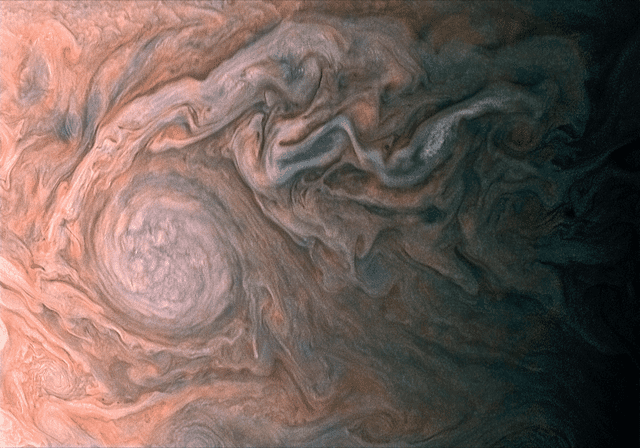NASA’s Science Mission Directorate has canceled a planned tightening of Juno’s orbit around Jupiter after system checks revealed faulty fuel valves on board the probe.

Last year on July 4, the Juno probe reached its destination and settled in a comfortable 53-day orbit around Jupiter. On the closest point to the giant during every pass, it would deploy its sensor array and take as many measurements as possible, beaming the data back to Earth for study.
Researchers hoped to reduce Juno’s orbit around the gas giant down to just 14 days to speed up data acquisition from the craft. To do this, they planned on firing the craft’s main engine to reduce its speed and get it closer to Jupiter. Operational tests performed before the braking however showed the two helium check valves which supply the engine did not operate as expected when the system was fully pressurized.
“Telemetry from the spacecraft indicated that it took several minutes for the valves to open, while it took only a few seconds during past main engine firings,” a NASA status report on Friday read.
Rather than risk to lose control on Juno’s current orbit, NASA postponed the maneuver. Since then, researchers have been hard at work looking into how the burn can safely be performed in light of the new technical difficulties.
But it seems they weren’t very confident in their chances. Last week, NASA announced it will abort the maneuver rather than risk to irrevocably alter Juno’s flight path. The probe will maintain its current orbit around Jupiter.
“We looked at multiple scenarios that would place Juno in a shorter-period orbit, but there was concern that another main engine burn could result in a less-than-desirable orbit,” said project manager Rick Nybakken with NASA’s Jet Propulsion Laboratory in Pasadena, California. “The bottom line is a burn represented a risk to completion of Juno’s science objectives.”
The good news is that the probe can still perform its task, it will just take a little longer to do so. Both orbits would yield the same quality of data, as they would both take Juno just as close to Jupiter — some 2,600 miles (4,200 km) above the gas giant’s clouds.

Image credits Credits: NASA/JPL-Caltech/SwRI/MSSS/Roman Tkachenko.
“The worst-case scenario is I have to be patient and get the science slowly,” lead researcher Scott Bolton, with the Southwest Research Institute in San Antonio, Texas, said after the engine problem surfaced in October.
“The science will be just as spectacular as with our original plan,” he added on Friday’s release.
“In fact, the longer orbit provides new opportunities that allow further exploration of the far reaches of space dominated by Jupiter’s magnetic field, increasing the value of Juno’s research,” the statement added.
Another upside of canceling the burn is that a more distant orbit will extend the craft’s operational life. Jupiter’s massive radiation belts were the main killer for Juno, and staying well away from them should better protect its systems.
In light of its extended operational life, Nybakken will probably request additional funding for the US$1.13 billion mission, currently scheduled to end on July 31, 2018 — when Juno would have completed its observations and become inoperable under the effects of radiation. The extended mission now aims at completing 12 close approaches.
Juno has proven instrumental in our understanding of how gas giants form and behave. If you want to take a more active part in its research, you can vote on which features of the planet will be imaged during each flyby in the JunoCam project set up by NASA. It’s the closest you’ll ever get to be an astronaut without even leaving your chair.


